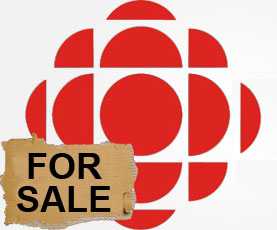Here’s a good job that may interest you.
A Corrections Officer making $59,513 to $74,647 per year would be a great paying job for most Canadians. You must apply by July 24th to the Correctional Service of Canada.
However, under the Who Can Apply section we see the following restrictions. Surely these must be based upon learned skill, educational qualification, or the content of one’s character? No, some particular hiring restrictions are based on the colour of one’s skin.
Persons residing or employed in Moncton, NB and within a 400 kilometer radius* of Moncton, NB, within Canadian territory, extending to, amongst others, Miscou Centre, NB, Cape Tormentine, NB Seal Cove, NB, Forest City, NB, Connors, NB, North Cape and EastPoint, PE, Yarmouth, NS, Main-à-Dieu, NS, Leslie, QC, Cap-des-Rosiers, QC, Saint-Antonin, QC who are members of one of the following Employment Equity groups: Aboriginal persons** Visible minorities***
Those asterisks helpfully let us know what these terms mean,
**An Aboriginal person is a North American Indian or a member of a First Nation, Métis or Inuit. North American Indians or members of a First Nation include treaty, status or registered Indians, as well as non-status and non-registered Indians. Effective January 1, 2010, all departments and agencies under the Public Service Employment Act are required to use an Affirmation of Aboriginal Affiliation Form (AAAF)for appointment processes in which the area of selection is restricted to Aboriginal peoples only or to employment equity groups that include Aboriginal peoples. The AAAF is a condition of appointment: it must be completed and signed by the candidate before or at the same time as the Letter of Offer. For more information, consult the Public Service Commission’s Web site on AAAF.
***A person in a visible minority group is someone (other than an Aboriginal person as defined above) who is non-white in colour/race, regardless of place of birth. The visible minority group includes: Black, Chinese, Filipino, Japanese, Korean, South Asian-East Indian (including Indian from India; Bangladeshi; Pakistani; East Indian from Guyana, Trinidad, East Africa; etc.), Southeast Asian (including Burmese; Cambodian; Laotian; Thai; Vietnamese; etc.) non-white West Asian, North African or Arab (including Egyptian; Libyan; Lebanese; etc.), non-white Latin American (including indigenous persons from Central and South America, etc.), person of mixed origin (with one parent in one of the visible minority groups listed above), other visible minority group.
This issue has come up before and a review was promised by Stockwell Day, then Minister of the Treasury Board.
“While we support diversity in the public service, we want to ensure that no Canadian is barred from opportunities in the public service based on race or ethnicity,” Day said in a statement.
Immigration Minister Jason Kenney, who was also involved in the decision to review the government’s hiring practices, which give priority to qualified applicants from minority groups, said everyone should be considered for federal jobs.
“We are in favour of appropriate diversity in the public service and reasonable efforts to achieve it, but we don’t think any Canadians should be excluded from applying within their government,” he told CBC News. “It’s OK to encourage people from different backgrounds to apply but in our judgment it goes too far to tell people that if they are not of a particular race or ethnicity they cannot apply [for a job] that is actually funded by their tax dollars.”
A representative workplace that doesn’t discriminate is an ideal that should be held by everyone. What is the progress of this review?



